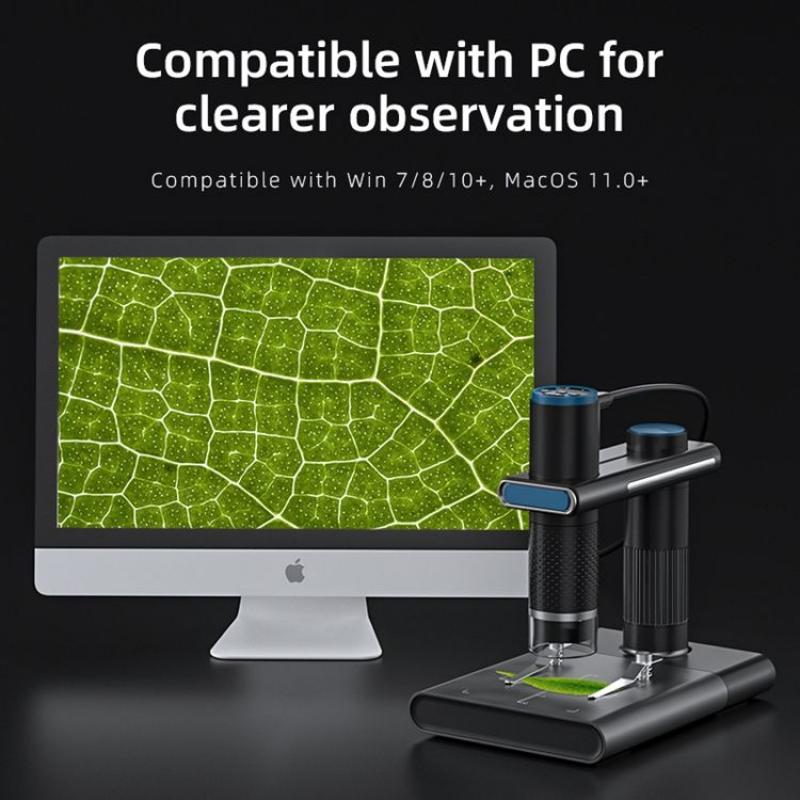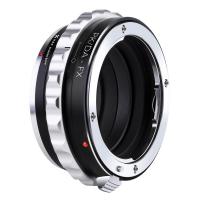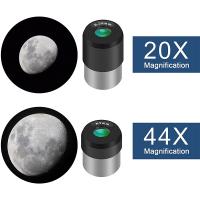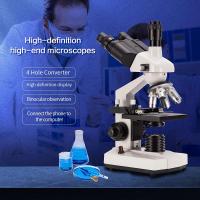Which Organelles Are Visible With The Light Microscope ?
Some of the organelles that are visible with the light microscope include the nucleus, mitochondria, Golgi apparatus, endoplasmic reticulum, and lysosomes. However, the resolution of the light microscope is limited, so some organelles such as ribosomes and peroxisomes may not be visible. Additionally, the visibility of organelles may depend on the staining techniques used and the quality of the microscope being used.
1、 Nucleus

The nucleus is one of the most prominent organelles visible with the light microscope. It is a membrane-bound structure that contains the genetic material of the cell in the form of DNA. The nucleus is typically round or oval in shape and is located near the center of the cell.
In addition to the nucleus, other organelles that are visible with the light microscope include the mitochondria, endoplasmic reticulum, Golgi apparatus, and lysosomes. These organelles are involved in various cellular processes such as energy production, protein synthesis, and waste disposal.
However, it is important to note that the resolution of the light microscope is limited, and some organelles may not be visible with this type of microscope. For example, structures such as ribosomes and microfilaments are too small to be seen with the light microscope.
Recent advances in microscopy techniques, such as confocal microscopy and super-resolution microscopy, have allowed scientists to visualize smaller structures and organelles with greater detail. These techniques have revealed new insights into the structure and function of cells and have expanded our understanding of the complexity of cellular processes.
In conclusion, while the nucleus is one of the most prominent organelles visible with the light microscope, other organelles such as the mitochondria, endoplasmic reticulum, Golgi apparatus, and lysosomes can also be observed. However, the limitations of the light microscope mean that some structures may not be visible, and newer microscopy techniques are needed to visualize smaller structures and organelles.
2、 Mitochondria

Mitochondria are one of the organelles that are visible with the light microscope. These organelles are responsible for producing energy in the form of ATP through cellular respiration. They are found in almost all eukaryotic cells and are essential for the survival of the cell.
With the light microscope, mitochondria appear as small, rod-shaped structures that are scattered throughout the cytoplasm of the cell. They are typically around 1-10 micrometers in length and can vary in shape depending on the cell type and metabolic activity.
Recent advances in microscopy techniques have allowed for more detailed imaging of mitochondria, including their structure and function. For example, super-resolution microscopy has enabled researchers to visualize the inner membrane of mitochondria, which contains the electron transport chain responsible for ATP production.
Additionally, live-cell imaging techniques have allowed for the observation of mitochondrial dynamics, including their movement and fusion/fission events. This has led to a better understanding of the role of mitochondria in cellular processes such as apoptosis and autophagy.
In summary, while mitochondria have long been visible with the light microscope, recent advances in microscopy techniques have allowed for more detailed imaging and a better understanding of their structure and function.
3、 Endoplasmic reticulum

The endoplasmic reticulum (ER) is a complex network of membranous tubules and sacs that are involved in a variety of cellular processes, including protein synthesis, lipid metabolism, and calcium storage. The ER is a prominent organelle in eukaryotic cells and can be visualized using light microscopy.
With the light microscope, the ER appears as a network of interconnected tubules and flattened sacs that extend throughout the cytoplasm of the cell. The ER can be distinguished from other organelles by its characteristic morphology and its association with ribosomes, which are responsible for protein synthesis.
Recent advances in microscopy techniques, such as super-resolution microscopy, have allowed for more detailed visualization of the ER and its substructures. For example, it has been shown that the ER can form specialized structures called "sheets" that are involved in lipid metabolism and that these sheets can be visualized using super-resolution microscopy.
In addition, researchers have used fluorescent protein labeling and live-cell imaging to study the dynamics of the ER and its interactions with other organelles. These studies have revealed that the ER is a highly dynamic organelle that can undergo rapid changes in response to cellular signals and environmental cues.
Overall, the endoplasmic reticulum is a complex and dynamic organelle that can be visualized using light microscopy and other advanced imaging techniques. Further research is needed to fully understand the structure and function of the ER and its role in cellular processes.
4、 Golgi apparatus

The Golgi apparatus is one of the organelles that can be visualized with a light microscope. It was first discovered by Camillo Golgi in 1898, and its function was later elucidated by George Palade in the 1950s. The Golgi apparatus is a complex structure composed of flattened membrane-bound sacs called cisternae. It is involved in the processing, sorting, and modification of proteins and lipids that are synthesized in the endoplasmic reticulum (ER).
The Golgi apparatus is visible with a light microscope because it has a distinct morphology that can be stained with various dyes. However, the resolution of a light microscope is limited, and it cannot reveal the fine details of the Golgi apparatus. Therefore, electron microscopy is required to study the ultrastructure of the Golgi apparatus.
Recent studies have shown that the Golgi apparatus is a dynamic organelle that undergoes constant remodeling and fragmentation. It is now known that the Golgi apparatus is not a static structure but rather a highly dynamic one that can rapidly adapt to changes in cellular conditions. This dynamic behavior is mediated by a complex network of proteins and lipids that regulate the trafficking and fusion of Golgi membranes.
In conclusion, the Golgi apparatus is one of the organelles that can be visualized with a light microscope. However, the resolution of a light microscope is limited, and electron microscopy is required to study the ultrastructure of the Golgi apparatus. Recent studies have revealed that the Golgi apparatus is a highly dynamic organelle that undergoes constant remodeling and fragmentation.







































